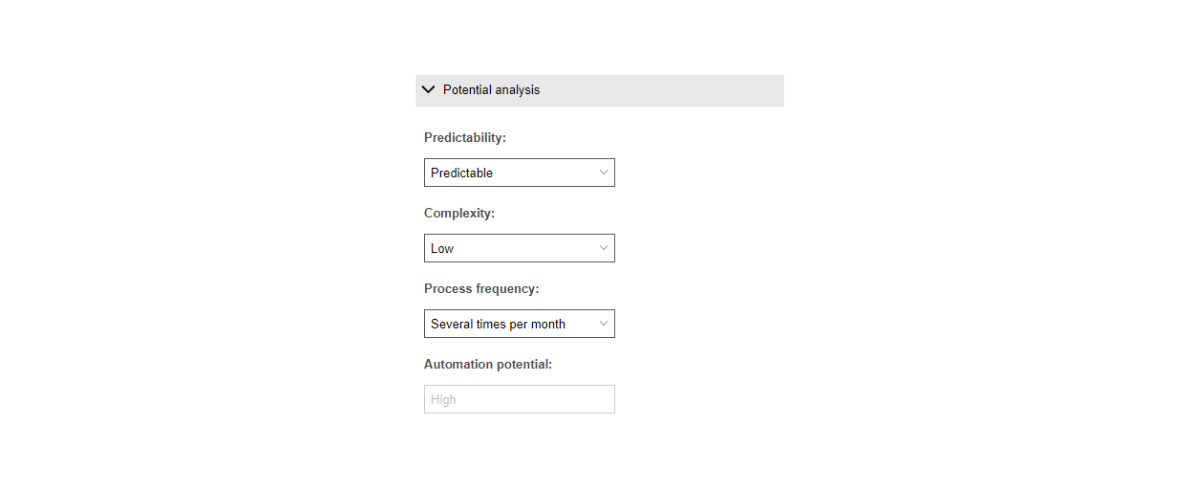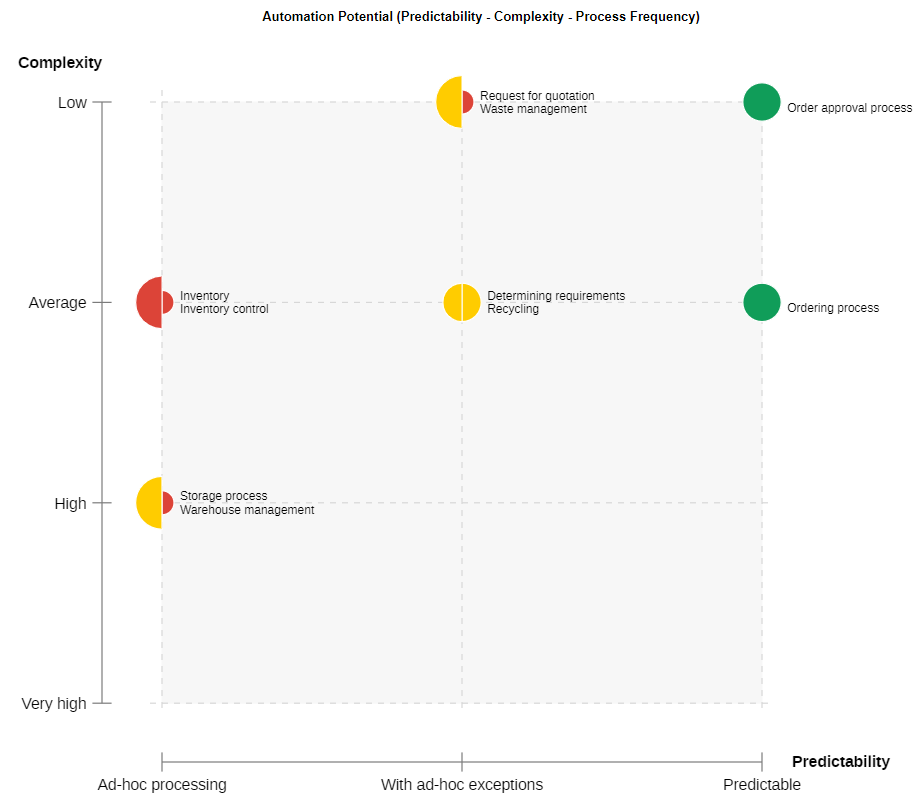Complexity
The complexity of a process depends on various factors, such as the number of steps, the systems involved, and the degree of human decision-making required. Simple processes, such as automated email processing or managing vacation requests, are characterized by clear procedures and few decisions. Complex processes, on the other hand, such as developing new products or handling customer complaints, involve a multitude of steps, decisions, and interactions. While simple processes tend to be easy to automate, complex processes often require in-depth analysis and can present additional challenges in implementation.












